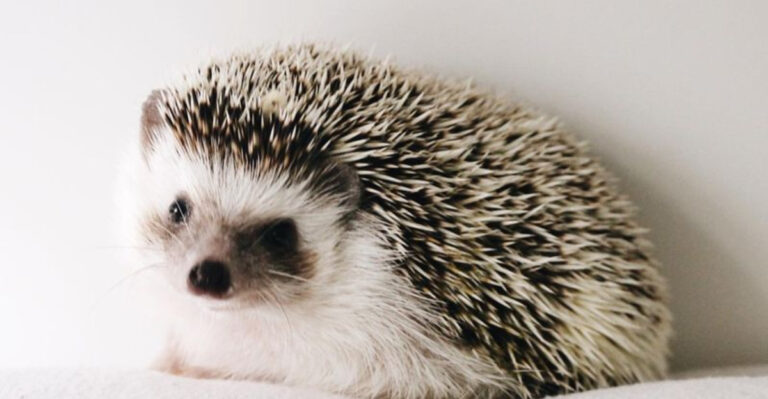15 Ways You’re Accidentally Neglecting Your Cat When You Leave Them Alone
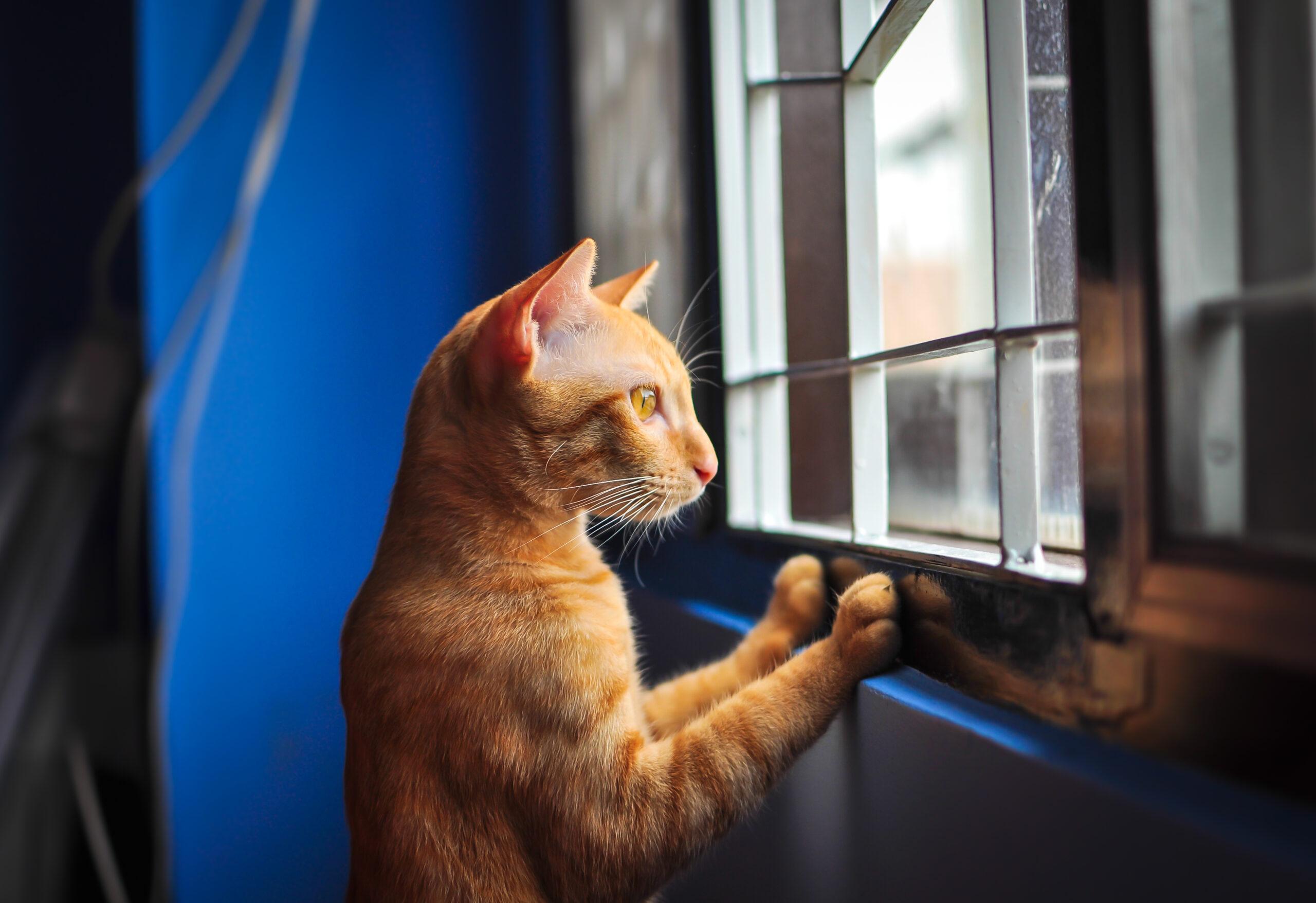
Cats might seem independent, but leaving them home alone requires more preparation than many pet parents realize.
Those furry companions we adore have specific needs that shouldn’t be overlooked during our absence. Understanding these common mistakes can make a world of difference in your cat’s happiness, health, and overall well-being when you’re not around.
1. Forgetting Fresh Water Supply
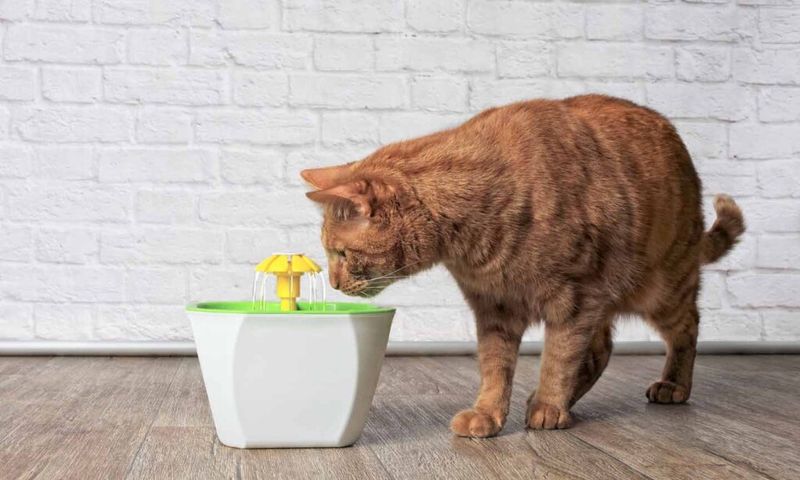
Many cat owners fill a single bowl before leaving, not realizing how quickly water becomes stale or gets knocked over. Cats are notoriously picky about their water freshness and might refuse to drink if it’s not up to their standards.
Dehydration can happen faster than you think, especially in warmer months. Consider investing in a pet fountain that circulates water continuously or placing multiple water bowls throughout your home as backup.
2. Leaving Out Too Much Food
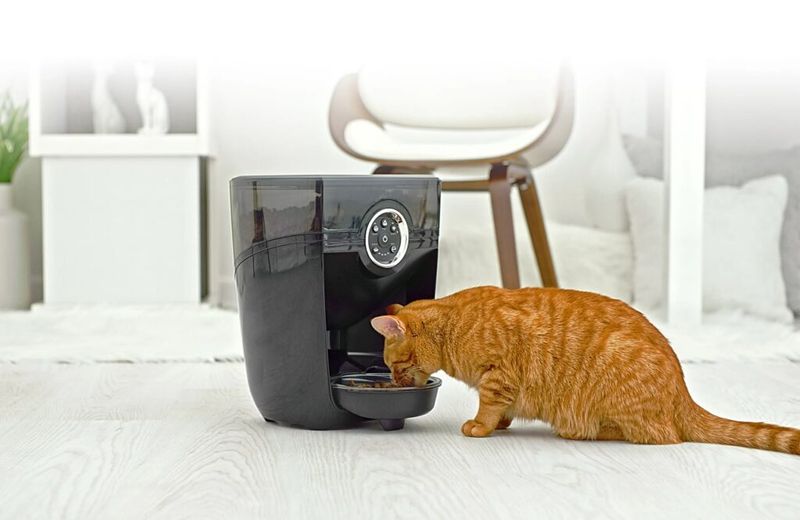
Free-feeding might seem convenient when you’re away, but dumping large amounts of food can lead to overfeeding, obesity, and even attract pests. Some cats will gorge themselves sick when presented with an abundance of food.
Automatic feeders that dispense measured portions at scheduled times are a game-changer. They maintain your cat’s routine and prevent the health issues associated with irregular eating patterns or excessive consumption.
3. Failing To Secure Dangerous Items
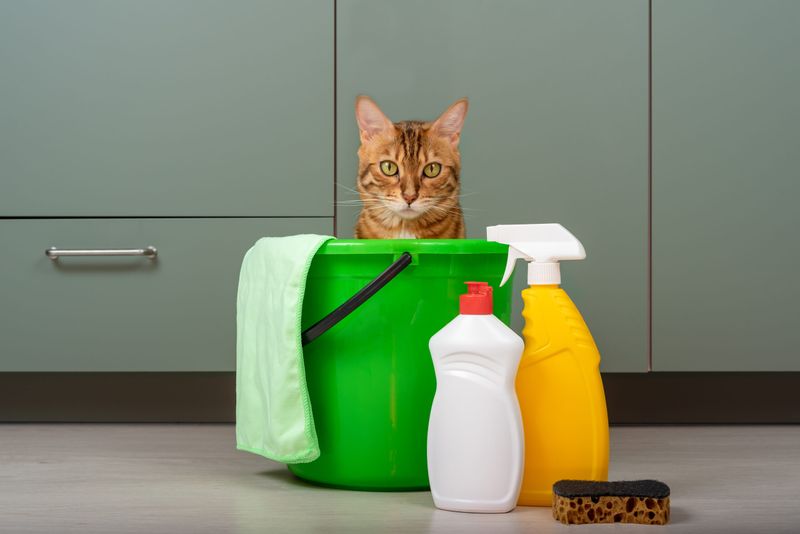
Bored cats become curious explorers, investigating places and things they normally ignore when you’re home. Plants, cleaning supplies, medications, and small chewable objects suddenly become fascinating toys to a lonely cat.
A thorough safety sweep before leaving can prevent emergency vet visits. Secure cabinet doors with child-proof locks, remove toxic plants, and put away small items like hair ties or string that could cause intestinal blockages if swallowed.
4. Ignoring Litter Box Maintenance
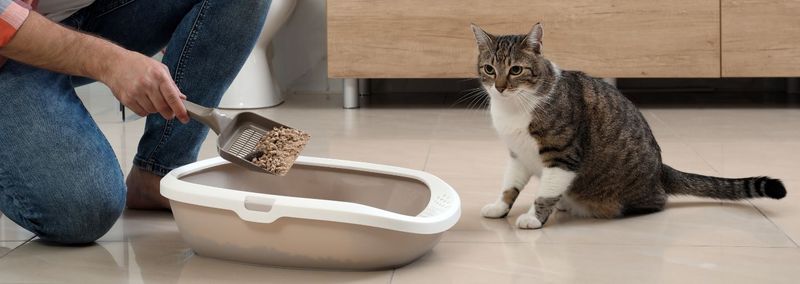
Nobody wants to come home to unpleasant odors, but your cat dislikes a dirty litter box even more. Cats are fastidiously clean animals who may refuse to use an overflowing box, leading to unwanted accidents around your home.
For longer absences, provide an extra litter box beyond your usual number. The rule of thumb is one more box than the number of cats you have. Consider self-cleaning options for extended trips.
5. Underestimating Enrichment Needs
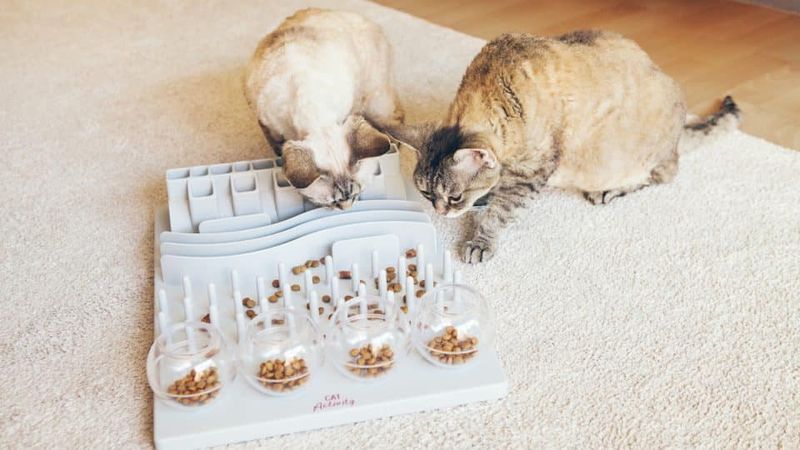
Cats sleep a lot, but they still need mental stimulation during their active hours. Without proper enrichment, boredom can lead to destructive behaviors like scratching furniture or excessive meowing.
Puzzle feeders that make your cat work for treats can provide hours of engagement. Window perches near bird feeders create natural entertainment. Rotating toys rather than leaving everything out maintains novelty and interest during your absence.
6. Leaving Windows Completely Closed
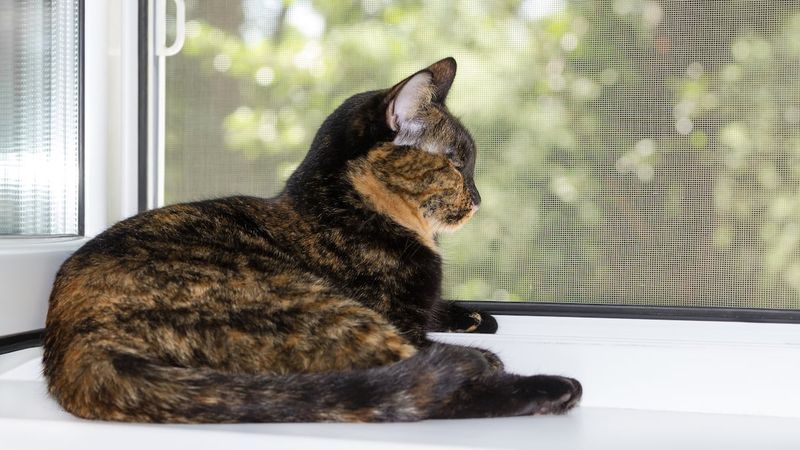
Proper ventilation matters for your cat’s comfort, especially during warmer months. Stagnant air can make your home uncomfortably hot and stuffy for a fur-covered companion.
Secure screen windows provide fresh air circulation without escape routes. Window perches near partially opened (but secured) windows offer entertainment through outdoor sights, sounds, and smells. Just ensure all screens are cat-proof and firmly attached.
7. Neglecting Hiding Spots

Unusual noises like delivery people, maintenance workers, or storms can frighten cats when they’re home alone. Without you there for reassurance, they need safe retreats to manage stress.
Create multiple hiding options throughout your home – empty boxes, cat tunnels, or covered beds work wonderfully. Position these sanctuaries in quiet areas away from windows and doors where unexpected visitors might appear.
8. Keeping Curtains Completely Closed
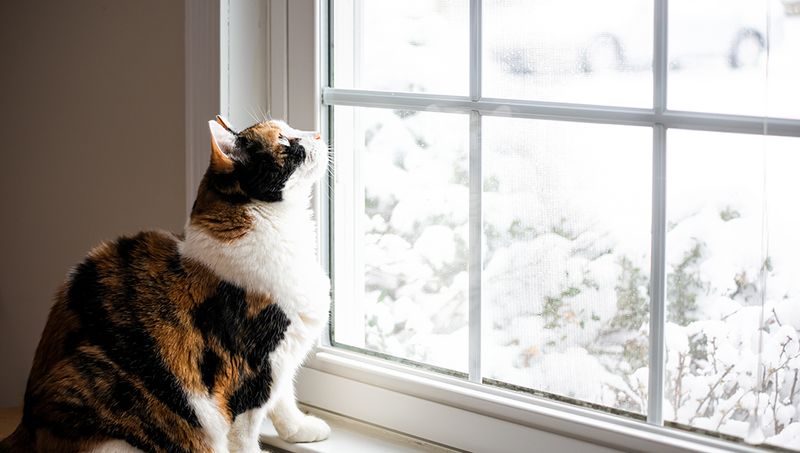
Natural light helps maintain your cat’s normal circadian rhythm. Cats naturally follow day-night cycles, and disrupting this pattern with constant darkness can lead to behavioral issues.
Leave some curtains open in safe areas away from direct, hot sunlight. The changing light throughout the day provides environmental cues that help regulate your cat’s sleeping and activity patterns. Plus, watching outdoor activities provides crucial mental stimulation.
9. Skipping Temperature Regulation
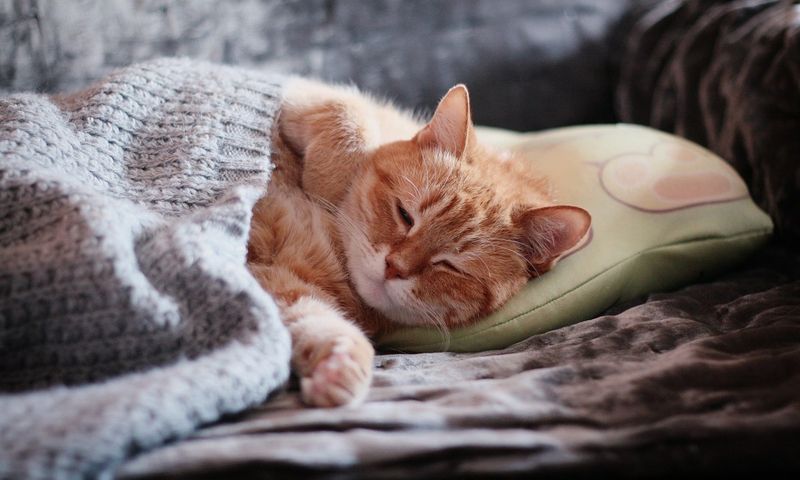
Cats are sensitive to temperature extremes but cannot adjust the thermostat themselves. During summer or winter, your home can quickly become uncomfortably hot or cold without proper regulation.
Never completely turn off heating or cooling when leaving cats alone. Program your thermostat for reasonable temperatures (68-78°F is generally comfortable). Remember that elderly cats or those with health conditions may need even more careful temperature management.
10. Forgetting To Leave Background Noise
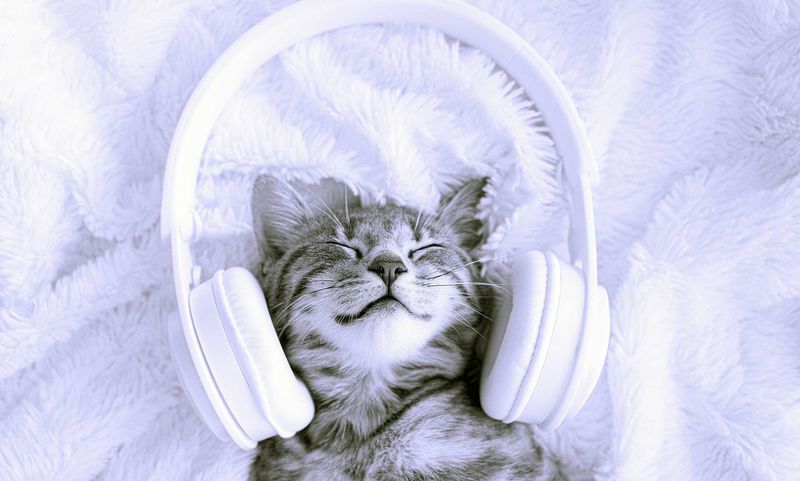
The sudden absence of household sounds can be jarring for cats accustomed to human activity. Complete silence highlights every strange noise, potentially causing anxiety.
A radio or television playing softly provides comforting background noise that masks startling sounds from outside. Many streaming services even offer pet-specific content with calming visuals and sounds. Just keep volumes moderate – you want ambient noise, not a blaring distraction.
11. Blocking Access To Favorite Spots
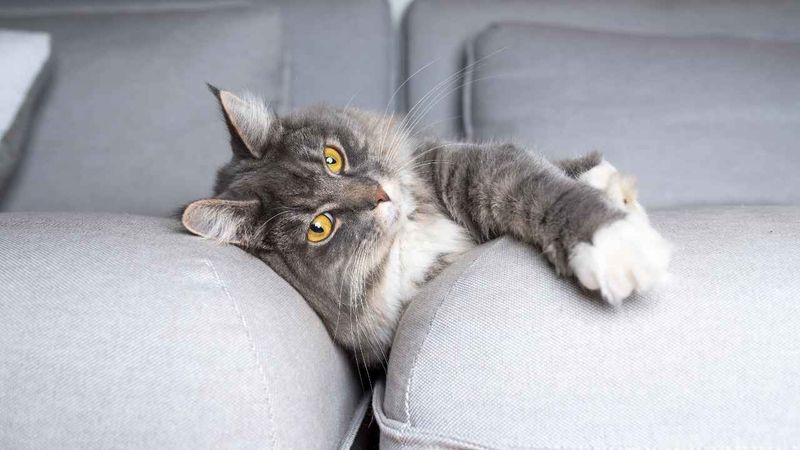
Accidentally closing doors to rooms containing your cat’s preferred resting places can cause unnecessary stress. Your feline friend has established territories and comfort zones throughout your home.
Before leaving, ensure interior doors remain open so your cat can access all their usual haunts. Pay special attention to closets or laundry rooms that might contain favorite hiding spots. Preventing access to these sanctuaries can increase anxiety during your absence.
12. Assuming Outdoor Time Is Necessary
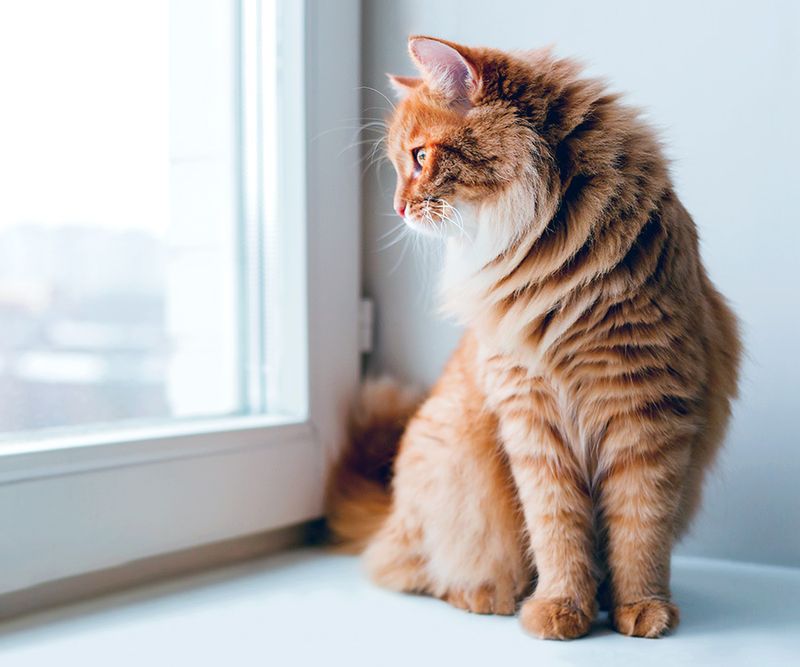
Some cat owners mistakenly leave windows or doors partially open, thinking their indoor cat needs outdoor access. This dangerous practice risks escape, injury, predator encounters, or exposure to diseases.
Indoor cats live longer, healthier lives without outdoor access during your absence. If your cat enjoys fresh air, secure catio enclosures provide safe outdoor experiences. Otherwise, stimulating indoor environments with climbing spaces and toys fulfill exercise needs without the dangers.
13. Ignoring Webcam Monitoring
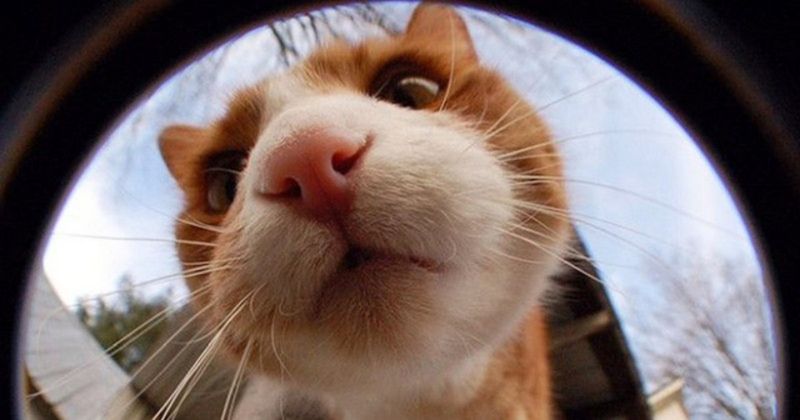
Modern technology offers affordable ways to check on your cat remotely, yet many owners don’t utilize these tools. Pet cameras can alert you to unexpected problems before they become emergencies.
Basic pet cameras let you peek in occasionally for peace of mind. More advanced options include two-way communication, treat dispensers, and even play features. These devices not only monitor for safety but can help maintain connection with your pet during longer absences.
14. Failing To Update Microchip Information
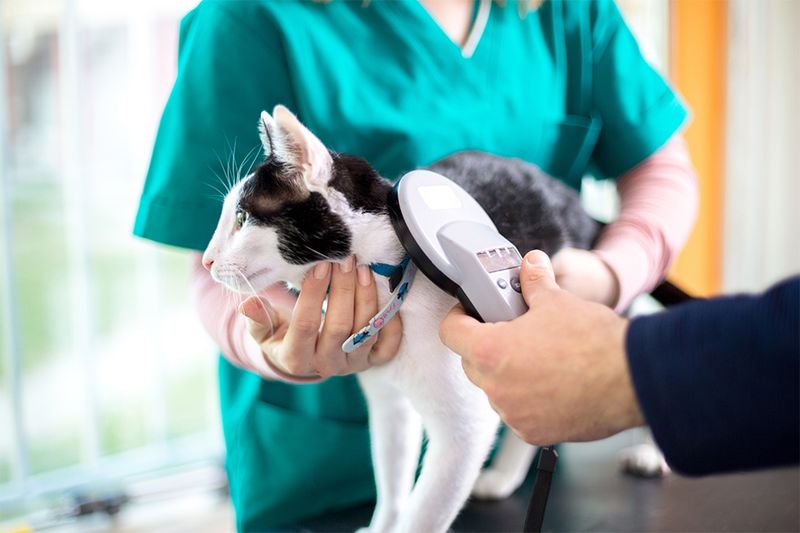
Emergencies happen despite our best preparations. If your cat escapes while you’re away, outdated contact information on microchips or ID tags dramatically reduces reunion chances.
Before any trip, verify that your microchip registry has your current phone number and the contact information for whoever is checking on your cat. Many missing pets are found but never reunited because owners can’t be reached through outdated registry information.
15. Overlooking Social Needs
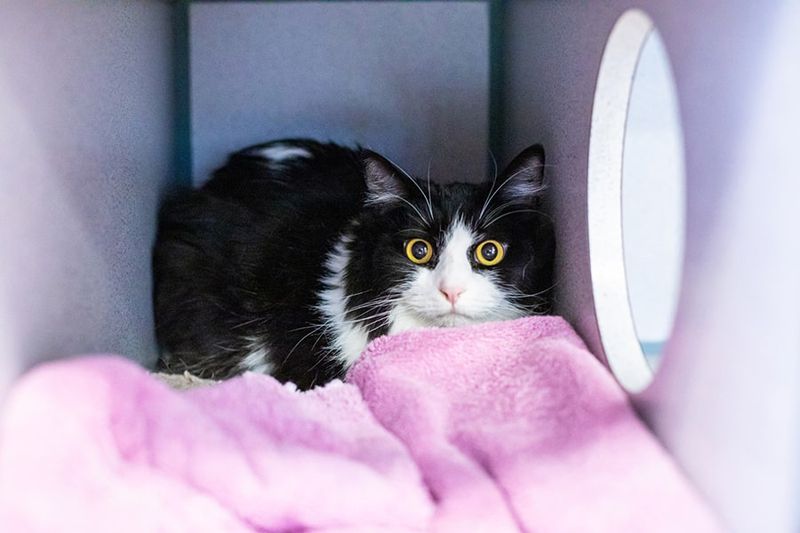
Contrary to their independent reputation, many cats experience separation anxiety or loneliness during extended absences. The myth that cats don’t need social interaction leads many owners to leave them alone for too long.
For absences beyond a day, arrange for a pet sitter to visit at least once daily. These visits provide not just practical care but crucial social interaction. Even brief play sessions and attention can significantly reduce stress for social cats.





